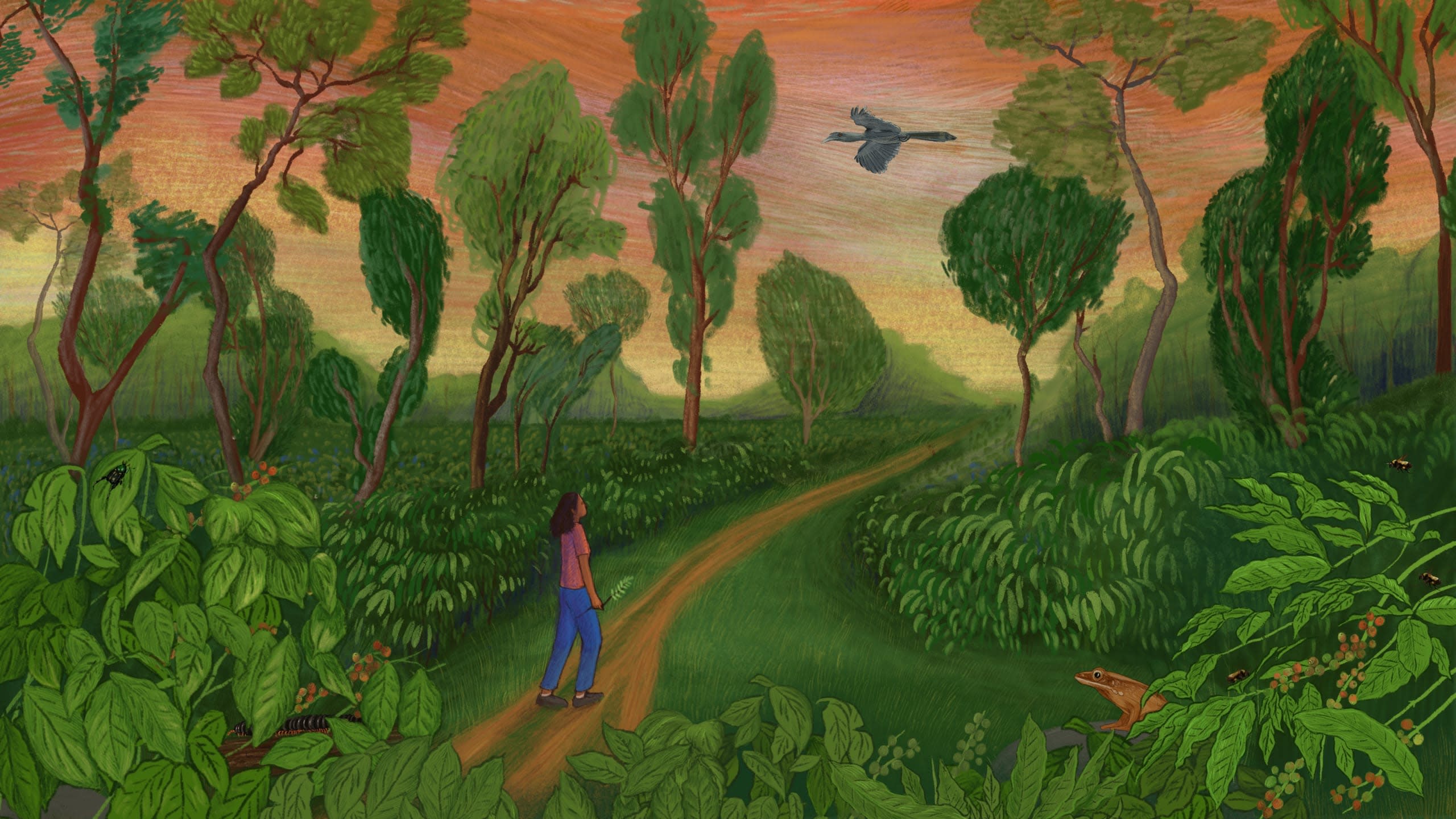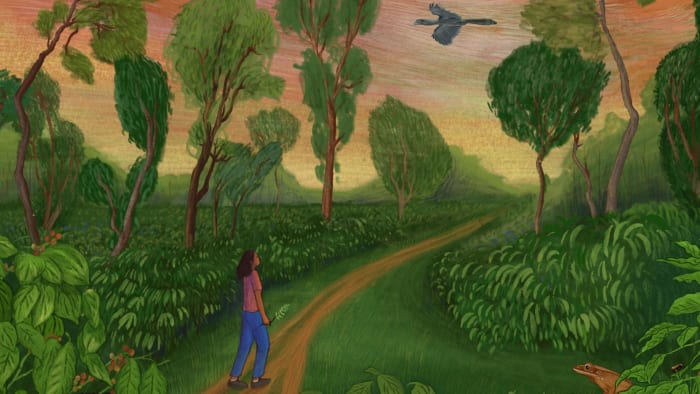 Listen to this article
•
15:34 min
Listen to this article
•
15:34 min
Death (noun): the irreversible cessation of all biological functions that sustain an organism. The most certain and yet the most surprising for every single one of us. Mostly because life is a lot like Schrödinger’s cat, “sealed in a box with something that can eventually kill it, but you don’t know if it is alive or dead until you open the box”. Perhaps we all exist in a state of being alive and dead simultaneously until death’s flourish.
There is a beautiful analogy about grief by Ruth Chan making the rounds on social media. She likens it to butter in puff pastry, seeping into the nooks and crannies of life, always there reminding, changing and transforming until one day, it is a “part of you in a way that feels ok”.
For someone who has held space for grief in her life for a long, long time, analogies like this help to make sense of what it is like to live with it. If butter and pastry don’t do it for you, let me borrow from the oyster and pearl symbolism. Pearls are formed as a natural defence against an irritant or parasite that enters, displaces or injures the mantle (dorsal body wall) of shelled molluscs. Pearls are essentially calcareous concentrations, valued as gemstones. They are formed when calcium carbonate, in the form of minerals, combines with an organic compound, conchiolin, to form nacre (mother of pearl). And while pearls are mostly spherical, there is variability in their shape, size, lustre, durability, value and attractiveness. Just like molluscs grow and live with their pearls, so do we with our grief. Grief can be ugly, beautiful, large, small, smooth, rough, bright, dull — but it is, at its very essence, an emotional response to loss. What starts off as pain or damage, an irritant, transforms into something that you can live with eventually.
When my father died 17 years ago, I grappled with my religious beliefs, trying to make sense of the hell we went through, only to lose him. I explored several spiritual paths, discarding each one because they didn’t serve to explain what I was going through. I witnessed friends pirouetting between boyfriends and existential crises, relatives sniffing and hawing, doling out advice on how to grieve, how to behave and “stepping up for your mother”, well-wishers whose offerings of help transformed into the not-so-sunny side of control. All this while, my mother, brother, and I bobbed helplessly in the ocean of our grief, trying to cope.
Where religion and people failed to provide answers, nature almost certainly did. Perhaps not answers I was looking for, but answers all the same. In the quiet of a cemetery, where manifestations of grief punctuate the muffled noises of life’s going-ons, nature finds a way to reassure. For my mother and me, it was in Jezebel butterflies. As they lowered my father’s body into the slushy ground, a common Jezebel butterfly alighted for the slightest moment on the wooden coffin before taking off to forage on a garland of marigolds that lay in a pile by the graveside. Common Jezebels are common enough in urban landscapes. Their bright colours indicate their toxicity to predators, all thanks to their gregarious larvae, which accumulate enough toxins from their host plants, often mistletoes. But in that moment, the butterfly was a link to my father, a reassurance. Perhaps not of heaven, hell, karma or the afterlife…Just a reassurance that as long as I saw a common Jezebel, I had a reminder of the existence of the man I loved.
My mother kept up this ritual of finding reminders in nature of people we have loved and lost. Her mother, my grandmother, who suffered from some form of arthritis in her legs, had a staunch conviction that if she ate the heart of a crow pheasant, she would be miraculously cured. To date, I have yet to come across this particular remedy in traditional medicine systems in southern India. Perhaps she met someone from the Indo-Malayan region where there is a belief, scientifically debunked, of course, that coucal nestlings, when made into an emulsion called minyak burong butbut, will cure all leg troubles, even fractures! “Let food be thy medicine”, she quoted. We never humoured her, much to her chagrin, but it seemed only fair that when she passed away, the neighbourhood coucals made a bit of a (joyful) ruckus.
I have her (and my grandfather) to thank because my love for the natural world stemmed from time spent with them in a biodiversity hotspot, the Western Ghats. My grandfather was an agriculturalist who grew coffee in the mountains of Chikkamagaluru. And while coffee and biodiversity have their issues, I would not be who I am without this link, this privilege. It was a privilege that afforded me summers of amateur birding, frogging, wildflower gathering, tree climbing. Of understanding what it was to be present, not to linger in the mind but step into the body, into the moment. It is why I sometimes cannot entertain the thought of leaving this country permanently. It would separate me from the Western Ghats, and that would mean fewer reminders of these people who I love so much.

I’ve always found comfort in trees, which is why I write about them so much. There is safety in knowing that trees have experienced so much more than I understand or perceive. That they have shared space and time with the people I have lost. Consider them, if you will, an ever-updating time capsule, but alive, with a sense of agency and wisdom that we will never fathom. There is a technique called tree meditation, which employs grounding yourself through a combination of tree visualisations and breathing. When grief hijacks the mind, imagining the earth, the connection you have to it, a connection to trees, through trees, can really help calm you down. Just walking through a park or a wooded grove can sometimes be enough. There is emotional relief in yielding to beings who have likely spent more time than you on earth and will hopefully spend more time than you on this earth.
Mindfulness, the practice of gently focusing your awareness on the present moment over and over again, can be as easy as going out birding or tide pooling, gardening, butterfly watching, foraging. Nature has a way of reeling you in, of taking you out of ruminating about death and loss if you let it. Layers of nacre gently swaddling the pain.
If none of this helps, maybe I could just leave you with some physics. That our universe, including us, is made up of atoms, the building blocks of matter. That energy is neither created nor destroyed. It is transformed. Death doesn’t mean disappearance or nothingness. Our atoms simply disperse into the air, the earth, the water, maybe even the stars, building new life, supporting old life. Like that common Jezebel being nourished by marigolds, my father’s atoms build into more than just reminders. They nourish, they form ecosystems.
We go on long after we are gone — a comforting interpretation of the old adage that “Life goes on”.









